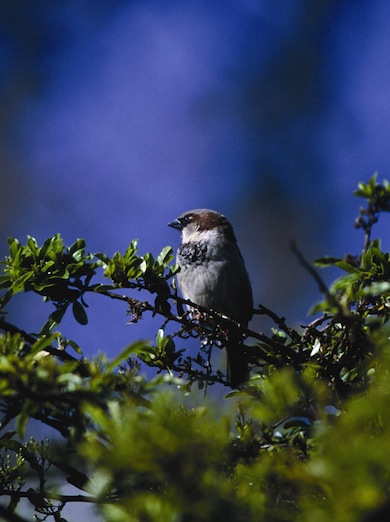The Barbican complex represents an interesting mix of Roman and medieval London alongside 1970s architecture. This wildlife site encompasses several elements in the general vicinity. These include St Alphage’s Garden plus two associated gardens; the Roman Wall, medieval stonework and Old Barber Surgeon’s Hall south of St Giles; the large gardens south of Defoe House; and the wild meadow garden, Beech Gardens, and the main lakes within the Barbican itself. Most of the raised terraces, the area around the old Barber Surgeon’s Hall, St Alphage’s Garden, and the lakeside by the Arts Centre are open to the public. The large parkland area and the wild meadow garden are open only to key-holding residents.
Local Wildlife Site
Accessible Sites of Importance for Nature Conservation
The Barbican and St Alphage's Gardens
Borough: City of London
Grade: Borough Grade II
Access: Free public access (part of site)
Area: 3.05 ha
Description
Wildlife
The site supports small populations of dunnocks and wrens, both of which are uncommon in the City, plus a few house sparrows, mallards and moorhens. The Roman wall at St Alphage's Gardens contains a large population of the fern maidenhair spleenwort. Also growing here are black spleenwort, hart's tongue and pellitory-of-the-wall. The two spleenworts are generally scarce in London. The Roman wall and Old Barber Surgeon's Hall to the south of St Giles support a colourful community of wild flowers. These include purple toadflax, broad-leaved willowherb, pellitory-of-the-wall, Oxford ragwort, eastern rocket, rat's-tail fescue and the garden escapee, hollyhock. Ivy and shrubbery on the Old Barber Surgeon's Hall provide further cover for birds. The large gardens to the south of Defoe House and north of the main lake comprise mown lawns with scattered trees and shrubberies. Blackbirds, dunnocks nest here, and probably wrens too. House sparrows forage on balconies and window boxes nearby. Robin and mistle thrush are seen occasionally. The wild garden in the north-west corner of the estate contains a small created meadow with rough meadow-grass, Yorkshire-fog and perennial rye-grass, plus a few wild flowers including red clover, three species of buttercup, wild carrot, common vetch, cut-leaved crane's-bill, and large stands of creeping thistle and common nettle. An area of planted woodland contains a mixture of native trees and shrubs. On the raised walkways, Beech Gardens is an attractive area, with shrubbery, lawns, flower borders and a shallow pool. Mallards sometimes visit the pool and blackbird, dunnock, blue tit and woodpigeon often forage here. The series of large lakes are largely bare of vegetation except in the planted enclosures. Soft rush, great willowherb and celery-leaved buttercup occur in crevices and there are several water-lilies. Mallard and moorhen both nest here.Facilities
No information available
House sparrow © Andy Fisher
Feedback
Have a question or a comment for this site, or notice anything missing or out of date? Please contact us.
